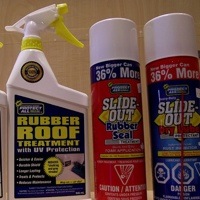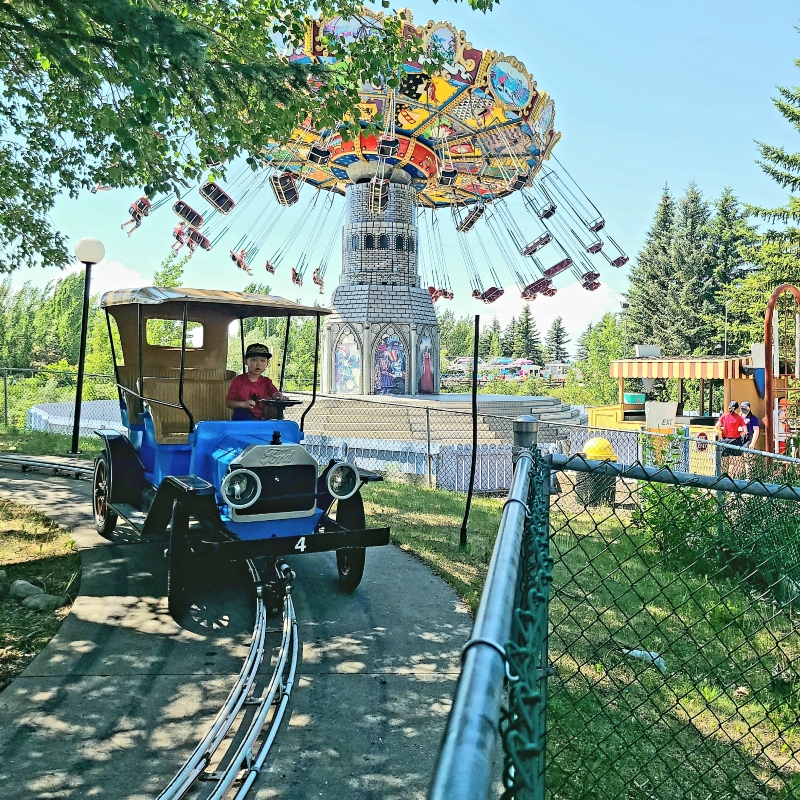RV Propane - Part two
Further information on propane safety
The liquid LP stored either a DOT cylinder or ASME tank, has no specific set pressure. The pressure will fluctuate depending on how much fuel is in the container, the ambient temperature and the atmospheric pressure on the outside of the container.
In order to supply a consistent and controlled vapour pressure to the propane appliances, a device known as a regulator is used. You will find this unit mounted near the type of container used on your RV, and it must be protected by a cover if exposed to the elements. All of the RV appliances like the fridge, stove, furnace and water heater function properly with a line pressure of 11 inches of water column.
The regulator used on today’s RVs is a two stage unit, in that the first stage will reduce the incoming tank pressure to about 10 psi (pounds per square inch) and the second stage will further reduce the pressure to about 0.5 psi. Most RV appliances have an additional regulator to provide a safety factor and ensure the appliance operates properly.
In recent years many manufacturers have been installing automatic changeover regulators on the new units. This type of regulator will separate the two cylinders into a designated supply and reserve cylinder. When the supply tank has been depleted of vapour the regulator will internally switch to the reserve tank with the added benefit of making the owner aware the tank is empty by changing the indicator from green to orange or red. When this function takes place and you have decided to refill the cylinder, you must first switch the lever to the tank presently supplying vapour, then turn the LP valve off on the depleted cylinder and remove it for refilling.
What to watch for
As mentioned above, the vent on the regulator must be protected—this will ensure that the internal diaphragm will breathe properly or move up and down with the pressure changes. If this vent becomes blocked with debris like dirt or insects, the regulator may fail to function or not work efficiently. You should check the mesh screen to ensure it is clean.
Another problem that can affect regulator operation is the presence of water, either in the cylinder or in the tank that enters the regulator and freezes up the internal components. The remedy for this is to have methyl alcohol added to the container before your next refill. The alcohol will absorb the moisture and eliminate freeze-ups.
In my experience as an RV technician, I have seen some issues involving the propane piping system. One potential problem is with the use of the incorrect teflon tape applied to the threaded fittings. Namely, the white teflon tape which is used primarily for the water plumbing system. This tape is not designed for propane use like the yellow teflon tape which is approved by the Canadian Gas Association (CGA).
It is also important that the right flare nut fittings are used in the copper piping throughout your RV. A forged brass nut must be used, not a milled brass nut which is used on water systems only. It is good preventative maintenance to check the piping underneath your RV for any damage that may have occured from rocks and other road debris hitting the lines and fittings. You can further protect the piping system by installing a split cable loom over the exposed areas in the copper piping.
Another problem we see at our shop on occasion is oil build-up in the low points of the piping. This will either starve the appliances of vapour, or (at best) cause an erratical operation, especially with regards to the higher BTU appliances like the water heater or furnace. If you suspect this issue then take your RV to your local service centre, and don’t be surprised if the LP containers and regulator require replacement. To further reduce or eliminate this problem, turn your cylinders off and burn the remaining propane out of the lines at the stove burner before you leave your RV for extended periods of time or during storage. On a final note, you must respect the rules and regulations regarding propane use and don’t take anything for granted. Don’t make alterations or modify components unless you are trained and qualified to do so. If you must remove an appliance to have it diagnosed and repaired, always install a flare nut plug and leak test the fitting before turning the LP gas back on.



